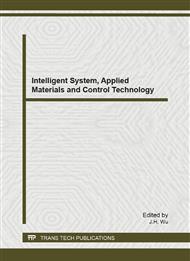[1]
Resnick, P., Iacovou, N., Suchak, M., Bergstrom, P. and Riedl, J. GroupLens: An Open Architecture for Collaborative Filtering of Netnews". In Proceedings of CSCW, 94, Chapel Hill, NC, (1994).
DOI: 10.1145/192844.192905
Google Scholar
[2]
P. A. Chirita, W. Nejdl, and C. Zamfir, Preventing Shilling Attacks in On-line Recommender System, Proceeding of the 7th Annual ACM International Workshop on Web Information and Data Management, pp.67-74, (2005).
DOI: 10.1145/1097047.1097061
Google Scholar
[3]
S. Zhang, J. Ford, and F. Makedon. low-dimensional linear model under Analysis of a low-dimensional recommendation attacks,. In Proceedings of the 29th ACM SIGIR, New York, USA: ACM Press, 2006, 517-524.
DOI: 10.1145/1148170.1148259
Google Scholar
[4]
B. Mehta, Unsupervised Shilling Detection for Collaborative Filtering, Association for the Advancement of Artificial Intelligence, pp.1402-1407, (2007).
Google Scholar
[5]
R. Burke, B. Mobasher, C. Williams, et al., Classification Features for Attack Detection in Collaborative Recommender Systems, Proceeding of the 12th ACM SIGKDD International Conferenece, pp.542-547, (2006).
DOI: 10.1145/1150402.1150465
Google Scholar
[6]
C. A. Williams, B. Mobasher, R. Burke et al., Detecting Profile Injection Attacks in Collaborative Filtering: A Classification-Based Approach, Advances in Web Mining and Web Usage Analysis, pp.167-186, (2007).
DOI: 10.1007/978-3-540-77485-3_10
Google Scholar
[7]
B Mobasher, R Burke, R Bhaumik, C Williams. Toward trustworthy recommender systems: An analysis of attack models and algorithm robustness,. ACM Transactions on Internet Technology, 2007, 7(4): 1-40.
DOI: 10.1145/1278366.1278372
Google Scholar
[8]
M. O'Mahony, N. Hurley, N. Kushmerick, and G. Silvestre. laborative recommendation: A robustness analysis,. ACM Transactions on Internet Technodogy, 2004, vol. 4, no. 4, 344~377.
DOI: 10.1145/1031114.1031116
Google Scholar


